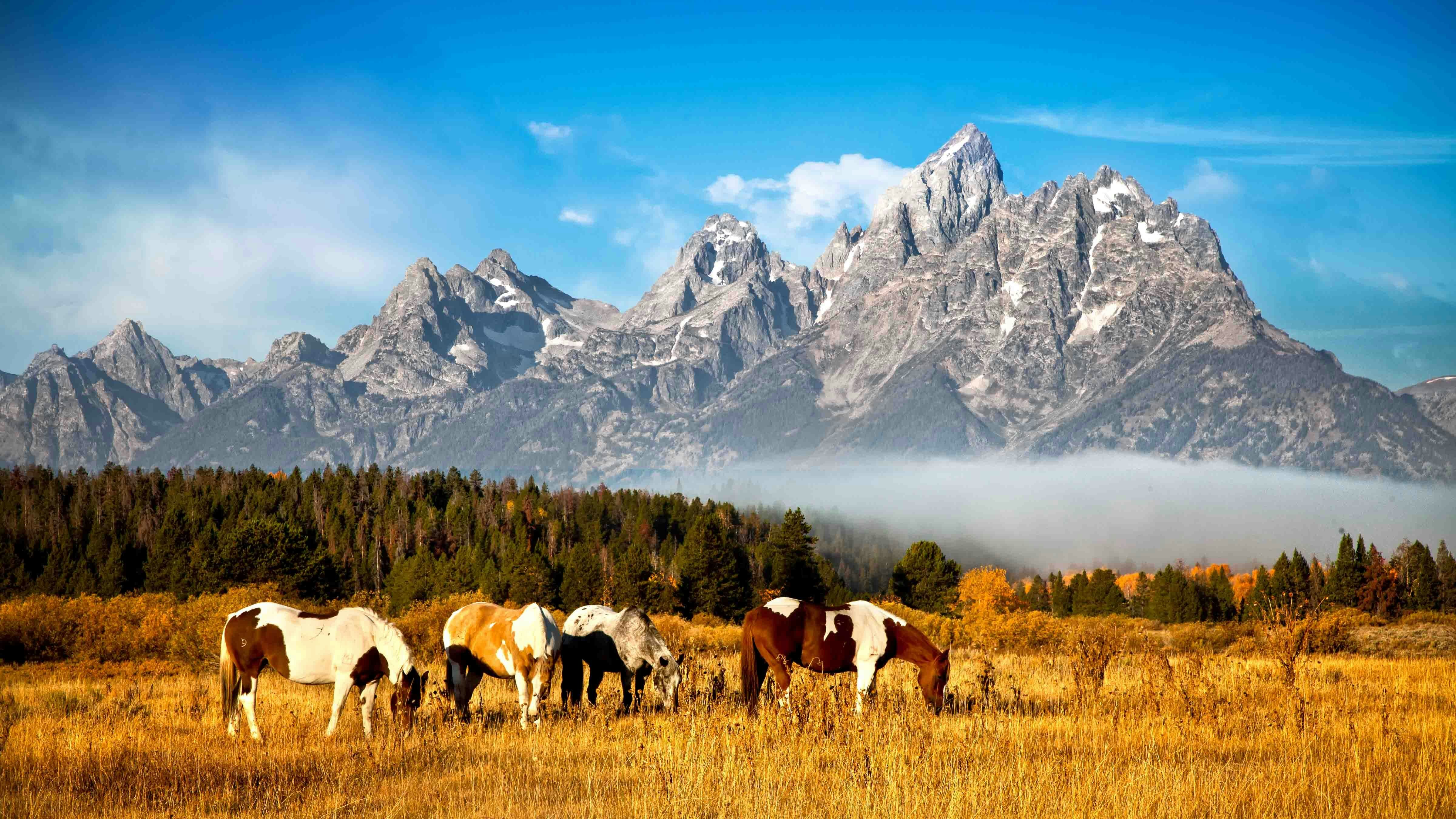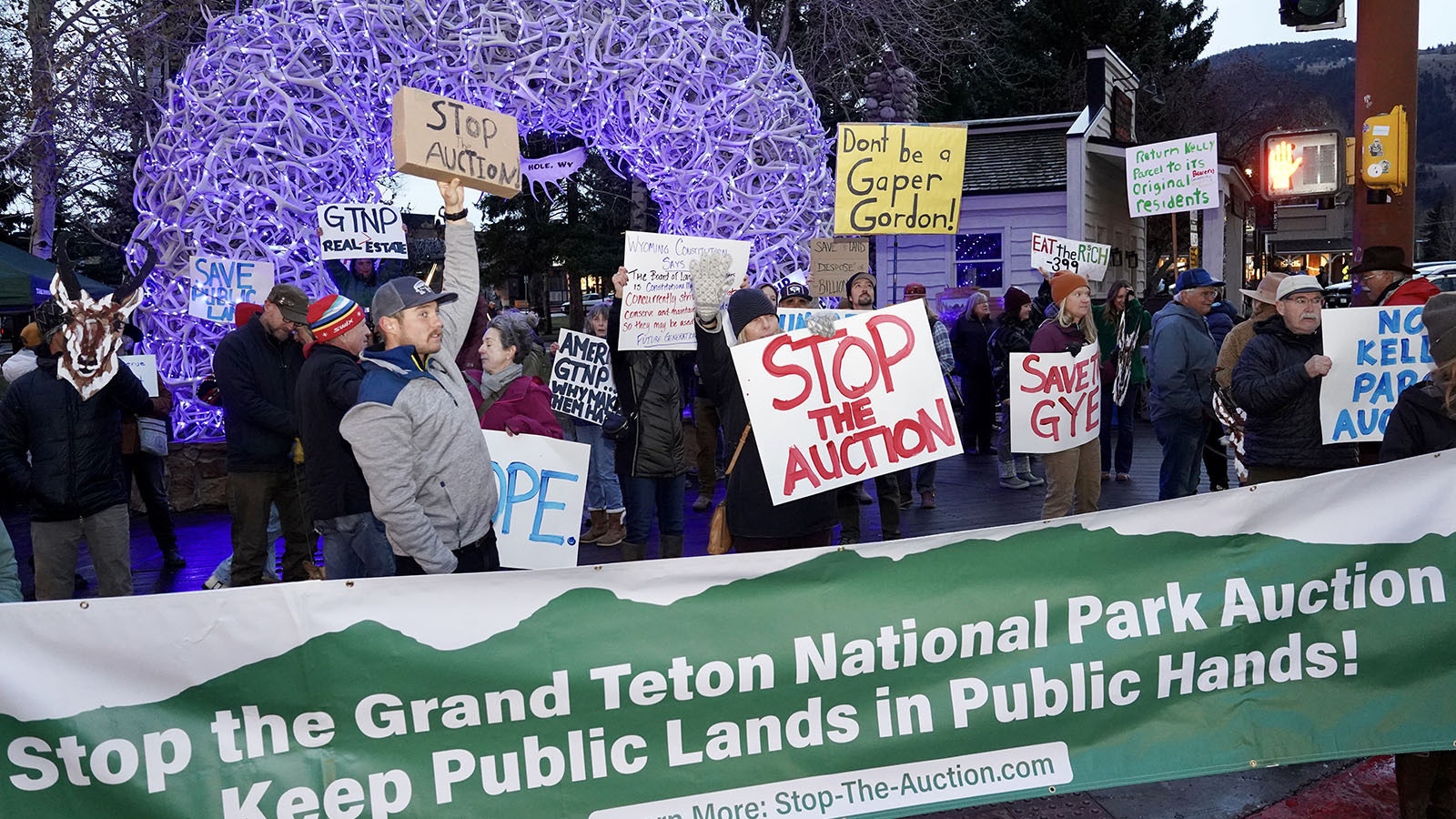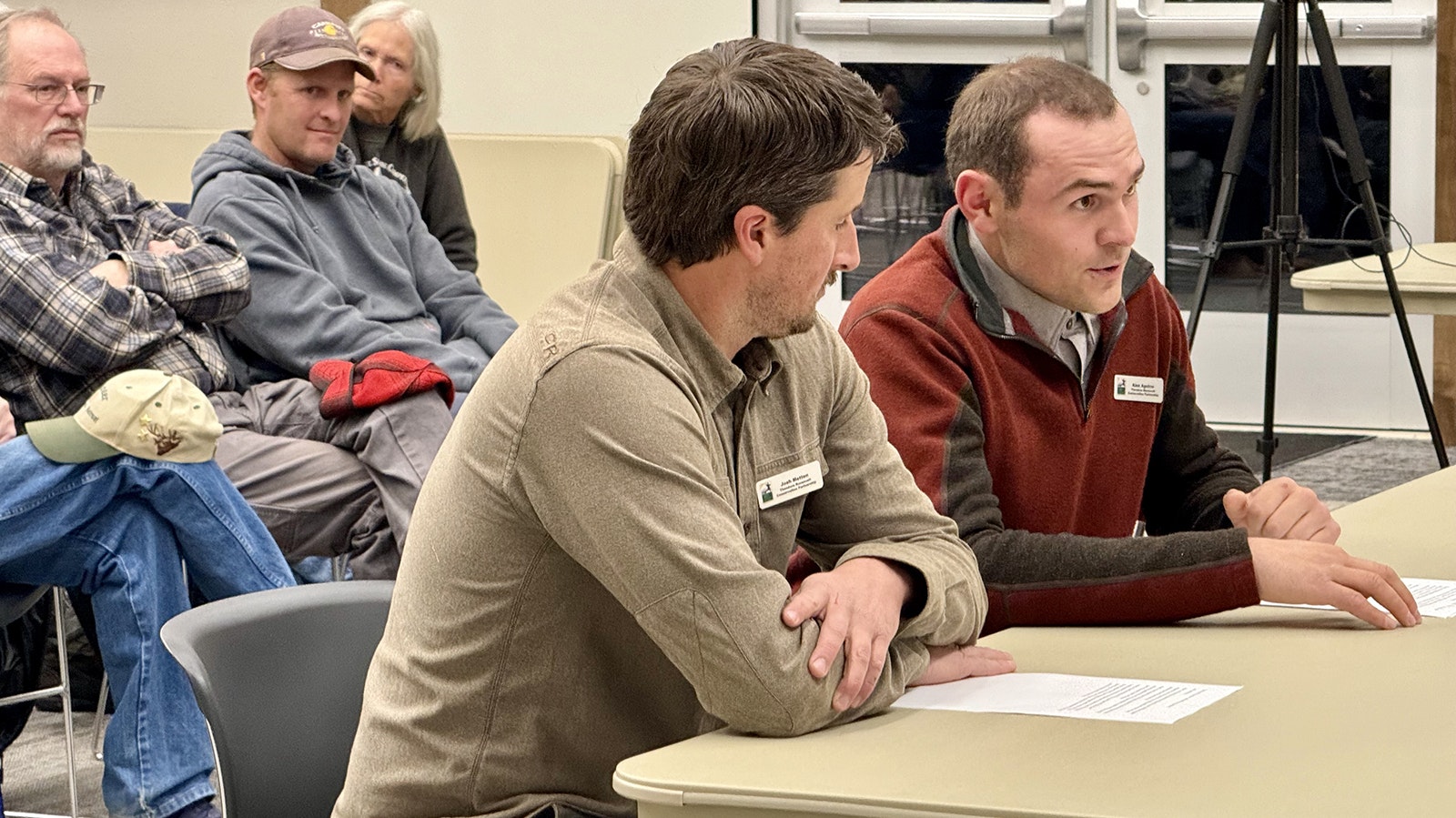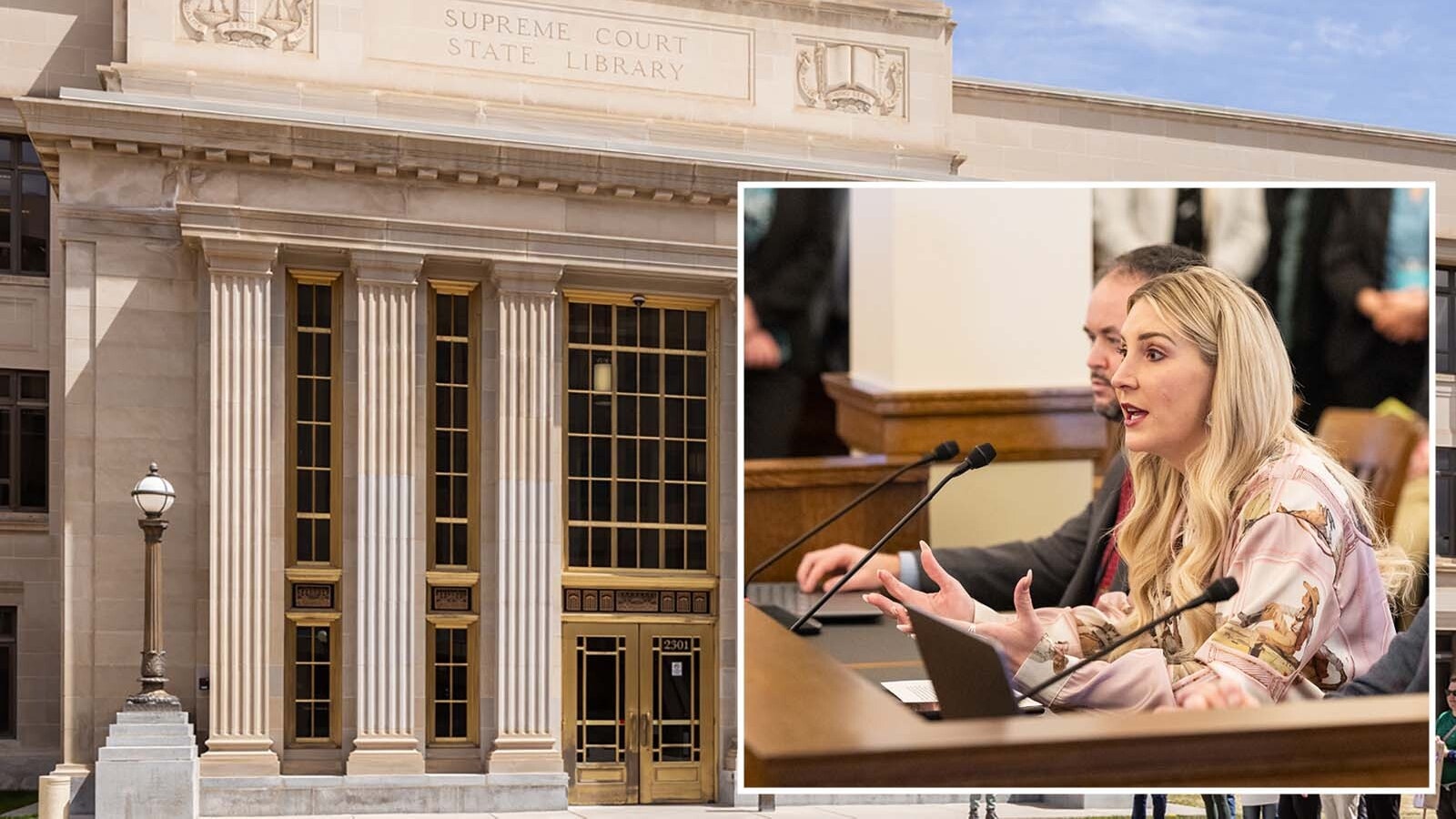Federal and state regulations that govern how officials manage what’s become an emotionally charged debate over the future of a pristine parcel of public land that borders Grand Teton National Park may clash with what the public has made crystal clear it wants — keep it public.
Months of public comment, debate, protests and posturing comes to a head Thursday when the State Board of Land Commissioners has its final meeting of the year and is expected to make a final decision on whether to put the Kelly Parcel up for public auction.
In many ways, it could seem the 640-acre plot of state-owned land that abuts Grand Teton Park is being held hostage by obligations dictated by the Wyoming Constitution.
Commissioners can decide to retain the parcel or authorize an auction to the highest bidder. And while the federal National Park Service has made it clear it wants to buy the Kelly Parcel to add to Grand Teton, it’s restricted to not paying more than its assessed value, but private interests could easily bid more at auction.
Meanwhile, the commission is charged with realizing the greatest financial return, which is earmarked for Wyoming public schools.
An auction would mean tens of millions of dollars for state education, but potentially at the cost of pristine wildlife habitat in one of the state’s most popular destinations.
And on Friday, the Office of State Lands and Investments (OSLI) made its recommendation to auction the land with a minimum bid of $80 million, about 30% more than its estimated value of $62 million. That would put the possibility of preserving the Kelly Parcel even more in jeopardy.
There is another solution: Sell the Kelly Parcel directly to the U.S. Department of the Interior, let it officially become part of Grand Teton National Park and ensure its protection forever.
It’s been done before, and the U.S. Interior Department is ready to act. But that can’t happen without special authorization, and that’s in the hands of the Wyoming Legislature.
The natural response to this dilemma that endangers a beloved piece of Wyoming is, “How did it come to this?” However, the better question is, “What is going to be done?”
Confused yet?
Déjà Vu All Over Again
The consternation over the Kelly Parcel is the fourth time this scenario has played out. Over the last decade, the Wyoming Office of State Lands and Investments has contented with the future of three other parcels located adjacent to Grand Teton National Park.
During a Nov. 28 public hearing on the Kelly Parcel held in Cody, a presentation going over the history and legalities that led to this point was delivered by OSLI Deputy Director Jason Crowder.
“We have a long history with these parcels within Grand Teton National Park,” he said.
It all started with the Kelly Parcel in 2010 when the Board of Land Commissioners informed the U.S. Department of the Interior that it intended to sell the 640-acre parcel because the federal government had been unable to acquire it.
That same year, the board entered into an agreement with the U.S. Department of the Interior, which permitted an exchange of the four state trust parcels in Grand Teton National Park with equivalent federal land elsewhere.
This was another way for the department to acquire the parcels without a need to find millions of dollars for an outright purchase.
However, the board couldn’t authorize a direct sale of the land to the federal government because the Wyoming Constitution prevents it. That changed when the Wyoming Legislature passed House Bill 22 in 2011, which granted the direct sale.
“They did that because they recognized the important features that those parcels represent to the department, the state of Wyoming and the beneficiaries,” Crowder said. “This was the first step to try to get all of those benefits realized.”
On Jan. 5, 2012, the Department of the Interior bought the mineral estate for the 39.59-acre Jackson Lake Parcel for $2 million. Exactly one year later, it acquired the surface and mineral estate of the 86.32-acre Snake River Parcel for $16 million.
Two down, two to go. But for those, the acreage and the prices were much larger.
Antelope Flats
When the 640-acre Antelope Flats parcel was next at risk of potential disposal in 2014, the Interior Department was given a deadline to buy it. When the deadline passed without the needed amount, the agreement was extended until Jan. 5, 2016.
The Interior Department was working on a federal land exchange with the newly formed State Land Exchange Advisory Panel, created by Senate Enrolled Act 69, until 2015 when the department stopped working on an exchange in favor of an outright purchase.
Crowder said the main reasons for this change were the soaring cost of the Antelope Flats Parcel and the unwieldy review needed for an equivalent land exchange.
“(The) 1,200 acres in Grand Teton National Park was worth approximately 120,000 acres in the rest of the state. The review of those 120,000 acres was a lot of work,” he said. “And later in 2015, the Department of Interior said this (was) too complicated to continue.”
After a “monumental effort,” the Interior Department acquired the Antelope Flats parcel on Dec. 12, 2016, for $46 million. Crowder explained that $23 million came from the department. The rest was raised through philanthropy and donations from organizations and individuals throughout the United States.
“That was a monumental effort,” Crowder said. “Everybody came together with enough money to acquire that for Grand Teton National Park.”
Finally, all that’s left is the Kelly Parcel.
When the Jan. 5, 2016, deadline arrived, the Interior Department didn’t have the money to buy it. Senate Enrolled Act 69 rolled back, and the authorization of a direct sale or exchange it granted lapsed.
Why So Urgent Now?
If there’s been a decade of cooperation and successful acquisitions by the Interior Department, why is there an urgency to resolve the Kelly Parcel now?
The answer lies in the Wyoming Constitution and what it obligates the Office of State Lands and Investments to do with state trust land.
Revenues earned from state trust land are distributed to various agencies benefiting the state. The Kelly Parcel is in the Common School Permanent Land Fund, benefiting all of Wyoming’s public schools.
Crowder explained that the OSLI can’t just collect revenue from state trust lands. It must, as mandated by the state Constitution, maximize it.
Between agricultural and grazing leases and temporary use permits, OSLI collects around $2.85 million annually in revenue from the Kelly Parcel.
An appraisal of the property, paid for by the Grand Teton National Park Foundation, has valued the 640-acre parcel at $97,539.06 per acre, for a total of $62,425,000.
If the Kelly Parcel were to sell, an estimate from the Wyoming Treasurer of 6.4% interest from invested earnings of the sale would add nearly $40 million to the Common School Permanent Land Fund over the next decade.
Determining the potential value of future interest and appreciation is finicky. That amount could be lower or higher depending on future markets, but even a conservative estimate of 3.52% interest would realize more than $22 million over 10 years.
A public auction, with the appraised value as the minimum price, is the only option for disposal of state trust land, which is laid out in the Wyoming Constitution.
The Office of State Lands and Investments could vet potential bidders, but would have no say over who could or couldn’t acquire it.
OSLI Director Jenifer Scoggin knows the auction is the main factor that has Wyomingites so concerned about the fate of the Kelly Parcel.
“The sense that we seem to be getting is that people are afraid of an auction at this point,” she told Cowboy State Daily. “They're afraid of development.”
Can National Park Service Buy It?
After four public hearings and an avalanche of public comments, the overwhelming opinion is that the Kelly Parcel must not be auctioned off. The obvious solution to preserve these 640 acres is adding it to Grand Teton National Park.
That would mean the Interior Department would soon be on the hook for another multimillion-dollar purchase.
Chip Jenkins, Superintendent of Grand Teton National Park, says the park and the Interior Department is ready to act and buy the Kelly Parcel.
Jenkins reminded Wyomingites that the Kelly Parcel isn’t just a Jackson or Grand Teton National Park issue. It’s an important area for Wyoming wildlife.
“The Kelly parcel is a key link in wildlife migration corridors that deer use connecting with the Wind River Reservation and that deer and pronghorn use going down toward Pinedale,” he said. “We're concerned that development of this parcel would impact those species and where they are elsewhere in Wyoming. By preserving and protecting this parcel, we can preserve those species for sportsmen and wildlife enthusiasts elsewhere.”
If the Interior Department wants to buy the Kelly Parcel and has the money, that would be the obvious solution to avoid a public auction. Based on the public hearings, it’s also the option most people in Wyoming prefer.
But a direct sale isn’t possible unless the Wyoming Legislature allows it, something that might be easier said than done.
What’s The Holdup?
When the Interior Department acquired the Jackson Lake, Snake River and Antelope Flats parcels, the Agreement for the Conveyance of Interest in Lands was still in effect. That allowed for the direct sale of the parcels.
When the Interior Department missed the 2016 deadline to acquire the Kelly Parcel, the agreement was rolled back. That would mean the Legislature need to pass legislation to prevent a public auction of the parcel.
Attempts have been made since 2016 to create a new agreement resurrecting the direct sale authorization. All have failed.
Senate File 88 in 2016 and Senate File 119 in 2017 attempted to extend the authorization. In 2021, House Bill 164 attempted to grant direct conveyance authorization to sell the Kelly Parcel to the Interior Department.
House District 24 Rep. Liz Storer said several barriers have held up new legislation allowing a direct sale to the Interior Department. Everything from wanting to hold onto the Kelly Parcel because of its future value to antagonism against the federal government owning more land in Wyoming.
With the furor incited by the potential loss of the parcel to development, Storer thinks the state’s elected representatives have enough information to know the majority opinion of their constituents and act accordingly.
“The Legislature has a clear choice: we can pass legislation to preserve Wyoming's important wildlife values and generate significant funding for education in perpetuity,” she said. “Or we can fail to act, missing an opportunity to pump at least $4 million annually into our public schools — starting now. Let's not kick the can down the road any longer.”
One Last Time
Rep. Sandy Newsome attended the Nov. 28 public hearing in Cody. She vowed to write and submit another bill to authorize a direct sale of the Kelly Parcel to the Interior Department during the 2024 budget session.
A bill submitted during a budget session requires a two-thirds majority to pass. That’s a high threshold for any bill, but the risk of losing the Kelly Parcel might be enough to meet that.
For now, the fate of the Kelly Parcel lies with the State Board of Land Commissioners on Thursday.
OSLI officially recommended a public auction of the Kelly Parcel, along with “any pertinent grazing and agricultural leases, special use leases, water rights, mineral leases and easements.” The state of Wyoming would retain “all interests in the mineral estate.”
The feedback OSLI collected from the public hearings and written comments will be presented to the board. From there, it could postpone a final decision, decide to retain the property or send it to the auction block.
If the board agrees with OSLI’s recommendation, a public auction will be held in Teton County “no later than Jan. 30, 2024.”
The day of reckoning for the Kelly Parcel is imminent. The sakes are high, but Jenkins believes the earnest effort to prevent the development of a pristine tract of land next to Grand Teton National Park will prevail.
“Remember, we've done this successfully three times in the past,” he said. “We're ready to try to make it a fourth.”

Andrew Rossi can be reached at arossi@cowboystatedaily.com.









